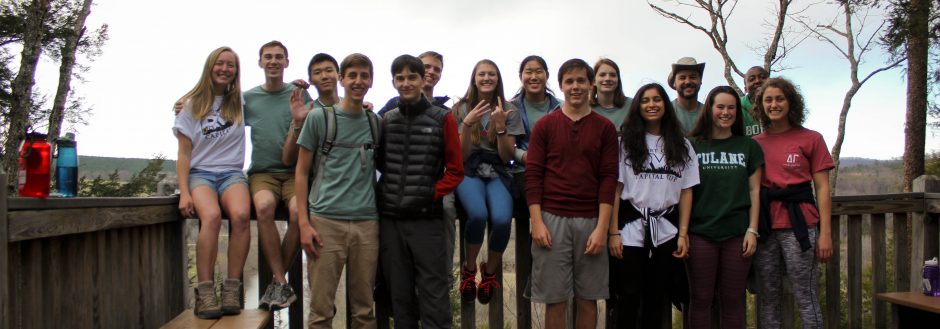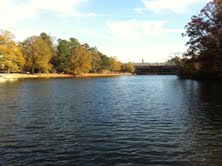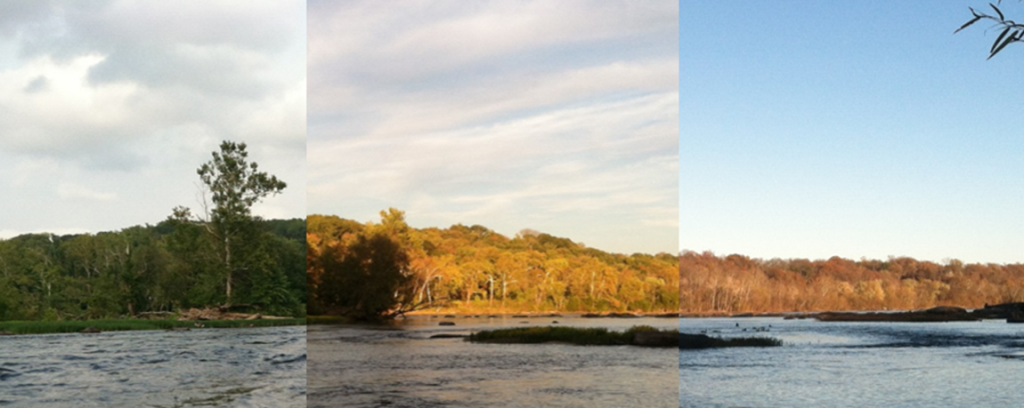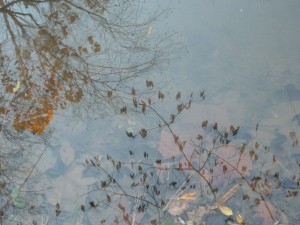
Somehow I timed this so that my first blog was in the morning, my second was in the afternoon, and now it is evening at the University Garden. It’s a warm enough day that it feels like early fall, but the quiet of nature and the rustle of the last falling leaves tells me otherwise. This time, instead of facing the garden, I’ve decided to face the golf course, where the trees catch the last golden rays of the setting sun. Some ever-greens obviously still have their color, but the light gives a warmth to the bare trees that I know will be skeletal when the grey of the winter really sets in. But it’s a beautiful day with a beautiful last bit of sunshine to write this by.
The most striking difference between today and the last two times I’ve been here to write these is the quiet. There is one squirrel making a last ditch effort to collect a bounty before winter, and a few crickets’ and birds’ murmurs, but no other animal noises. Not like the first time I was here. The loudest sounds today are, depressingly, from construction. Coming from two differ directions no less. The other distinct sound was me as I crunched my way through leaves to take pictures.
I still feel the same about the garden, that it is a marriage between civilization and nature, but the garden is definitely going to sleep, making it much more subtle. There are still the obvious places where plots are not being taken care of, which I actually took pictures of this time (see below). Notably, some of the harvest-able produce I mentioned last time are still here, but no longer harvest-able. But I know that even the neglected plots will be lively with growth in spring. Some of these neglected plot even now still have peppers and tomatoes.


There’s a pepper. Even though all the plants look dead and weedy and unkempt, there’s still growth and bounty.

The change of seasons really is incredible. I don’t know if other people feel this way, but to me the mood changes. It’s as if summer is a blazing fire, and winter is the burning coals, and spring and fall are when the falls are building or receding. All are warm, but all provide a different experience. Orange, red, and brown leaves, many on the ground, and the trees left stark, it’s beautiful. And it smells awesome. I’ve always kind of thought of fall as a beginning rather than an end, because the school year starts in the fall. In a way it sort of is, since the mast provides fertilizer for the growth of the spring. Even if some people think of fall and winter as an end, it is just a cycle after all.
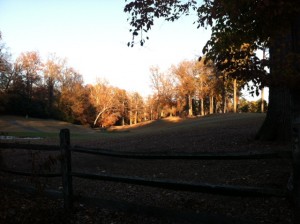
Speaking of cycles, because I’ve come at sunset I’m unusually aware of the day’s movement. Trees that we’re in full sun just ten minutes ago are in shadow now. It’s just as incredible as the change of the seasons. The outside world has so many cycles happening at once. Even animals and humans are consistent with this. It’s a little entertaining how much we try to control these cycles, stabilize them and make them consistent. The seasons don’t change much of the indoors. The setting of the sun doesn’t mean we have no light by which to do work. That’s part of the reason this garden is cool. Work in the garden makes those who work it have to experience and understand the seasons. Seasons are paramount to growing things. Those who work with plants have to respect this aspect of nature, arguably more than anything else. Yes, these days we have greenhouses to get around it, even they have to understand season, even if it is to manipulate them and how they affect plants. Some say those who use green houses to garden aren’t real gardeners. Or so said one of my favorate characters in a book I read as a child (Circle of Magic series by Tamora Pierce).
I do hope I will keep coming here, because it’s become quite therapeutic, but I honestly doubt I actually will. My time is too valuable to spare to do a little bit of blissful nothing for a while. Everyone’s time is too valuable for meditation these days. Even if it is this lovely. But it’s too out of the way. And it’s getting cold. And I’m making all the same excuses that everyone makes, but at least I’m being truthful. I might come here when I need a little creative inspiration, but my responsibilities outway my leisure, sadly enough. So tonight I will bid my reflection spot farewell, at least until spring. I don’t know that these observation blogs have become any more sophisticated or environmentally educated over the semester, but I have. I can now defend the importance of an environmental education and awareness to those who are non-believers. I now know how to make environmentalism a part of my life, become an active defender of nature and sustainability. Maybe when spring comes I’ll try and get myself a plot here at the community garden to work and become a part of the cycle that has been so neglected by most. That would make me happy.

